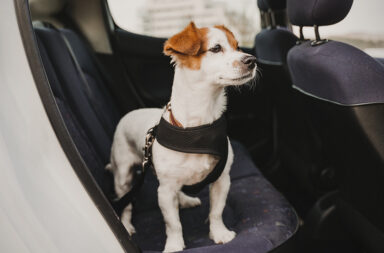Introduction
According to Matt Davies Harmony Communities, it is crucial to select a suitable crate for your dogs for their comfort and security if you have to travel with them frequently. However, it can be challenging to select a crate for your dog since you have to consider a lot of options.
The Considerations
Here are a few different dog crates you can consider for transporting your dog:
- Metal or wire dog crates – When people think of dog crates, they usually envision metal dog crates. Metal crates are heavy but ideal for crate training since they are difficult to chew through or break. Plus, the wire design offers your pet adequate ventilation and also provides you with an unobstructed view of your pet. In fact, you can even offer treats to your dog or touch them to relieve their anxiety.
Generally, dogs enjoy being in metal crates since it provides them with a sense of security, as long as you don’t associate the crates with bad experiences and punishments. It is recommended you choose a collapsible metal cage if you plan on traveling to dog events or dog shows with them since they are easier to carry and store.
- Soft dog crates – Soft dog crates are made with lightweight materials so that they are easier to carry, flexible, and space-saving. These are easy to set up and can be folded without the requirement of any tools. Typically, the base and the side panels of soft dog crates are made with tightly weaved soft-texture mesh fabric while the exterior is made with a resistant steel frame.
However, they are not as sturdy as a metal crate. Thus, soft dog crates are only suitable for small dogs or puppies that don’t have a habit of chewing through materials. It is recommended that you choose soft dog crates that are easy to clean and water-resistant.
- IATA-compliant dog crates – Dog crates that are approved for air travel are compliant with the standards defined by the International Air Transport Association (IATA). Generally, these are made using metal or plastic but have additional safety features for your pet and for the plane too.
For instance, an IATA-compliant dog crate includes dry food storage, a spill-proof hook-on food and water dish, an absorbent liner pad, waterproof document storage, ample ventilation, temporary pet ID and kennel name tag, and more. These are the best option if you travel with your dog frequently overseas or in the country.
- Plastic dog crates – Plastic dog crates are constructed with a heavy-duty plastic shell so that they can resist dog bites and protect your pet against shocks. They are not as large or heavy as metal crates since they are designed for mobility and traveling with your pet on train or car journeys.
Ensure that the plastic crate you choose has a good handle that can support the weight of your dog and offers good airflow so that your pet can breathe even in high temperatures.
Conclusion
Matt Davies Harmony Communities suggests you select a dog crate that is of a suitable size. Thus, ensure you measure your dog properly and choose a crate that is 2-4 inches larger in length and height.


